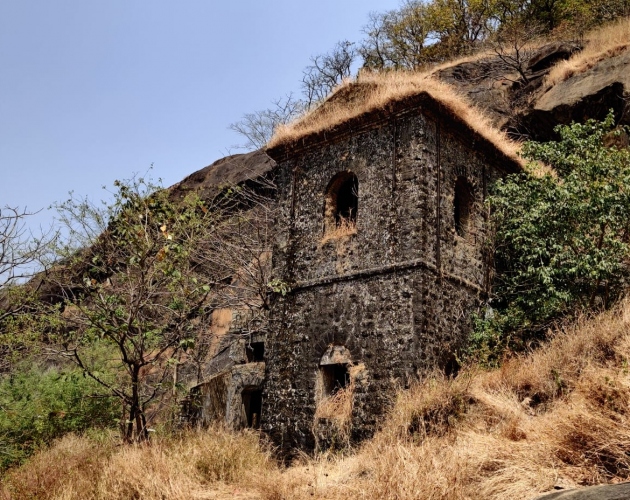SWR restoring building as part of conservation of rich heritage of Goa

BELAGAVI
A 135-year-old heritage structure has been recently discovered near the Dudhsagar waterfalls in the Braganza Ghat section between Goa and Karnataka, generating considerable excitement among heritage lovers who hope to uncover further research into the establishment of the railway line to Mormugao.
The South Western Railways (SWR) has begun the task to restore the heritage structure and has invited heritage enthusiasts from Goa to join hands in the restoration work.
The two-storied heritage structure was recently discovered by Jogendra Yadavendu, Addl Divisional Railway Manager at the SWR Hubballi division, a travel enthusiast who has scores of expeditions across the Indian Railway route.
Constructed by the West of India Portuguese Guaranteed Railway (WIPGR) company in 1885, the building is a part of the historical WIPGR project during the construction of the harbour at Mormugao. The 83-km rail route connected the then Portuguese Goa with British India via the steep Western Ghats as the construction involved two different companies in two colonial jurisdictions.
The stone masonry structure near the Dudhsagar waterfalls has stood the rough weather over 135 years and stands testimony to the history and interesting architectural features of that era.
The SWR has now taken up the task to restore this building to its original glory, as part of the conservation of the rich heritage of Goa and India.
“This 1200 sq ft double-storied building served as a railway station and residence of the station master during the metre gauge era,” said SWR Addl General Manager P K Mishra, who has initiated the restoration efforts.
“The ground floor was a station master room, the scene of all action as trains chugged on the metre gauge track, ensuring the safety in challenging Braganza Ghat section. Two adjoining rooms have served as storeroom and washroom.”
“It has a spacious drawing hall, bedroom and kitchen on the first floor and served as a resting place. This sentinel building on the hillside offers an amazing view of the valley from the second floor and a view of the track and tunnel on the opposite side.”
Mishra said the SWR has plans to develop the enchanting structure into a heritage gallery on the ground floor and a resthouse on the second floor, to offer the quaint charm of solitude and a chance to listen to songs of nature.
“The SWR also intends to organise a heritage walk around the Dudhsagar station, a nature lover’s delight,” added Mishra.
“While cleaning of the edifice has just begun, we invite rail enthusiasts from Goa to join hands with the SWR in restoring it. Come prepared to experience the nostalgia, fall in love with history, renew a timeless romance with the Indian Railways,” Mishra said.
According to Mishra, a treaty was signed on December 26, 1878, at Lisbon, between Portugal and Great Britain to construct a railway line on the West Coast of India.
In November 1879, a committee under the Duke of Sutherland as president accompanied by Ernest Edward Sawyer left for India to explore possibilities of a railway from Mormugão to Castle Rock.
The survey was started in February 1880 and completed in July 1880. The contract was signed on April 18, 1881, between the Portuguese and the British. The West of India Portuguese Railway Company was then formed under the chairmanship of Sir T Douglas Forsyth.